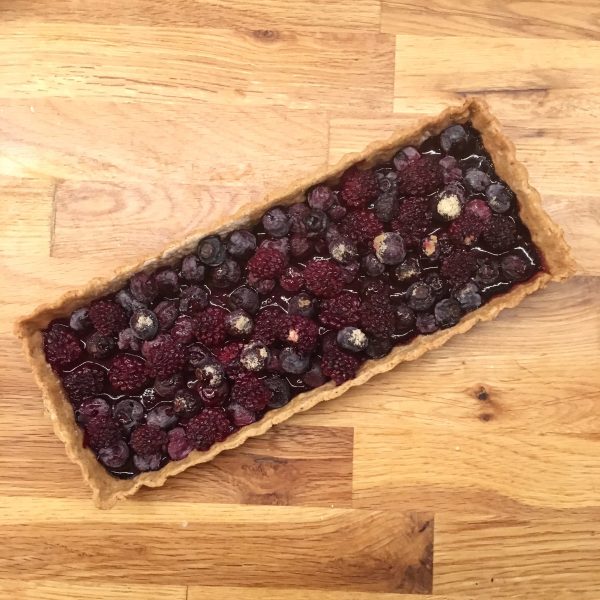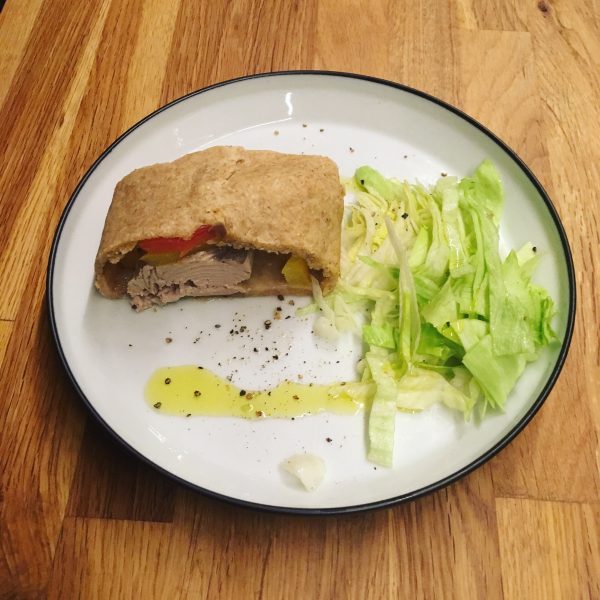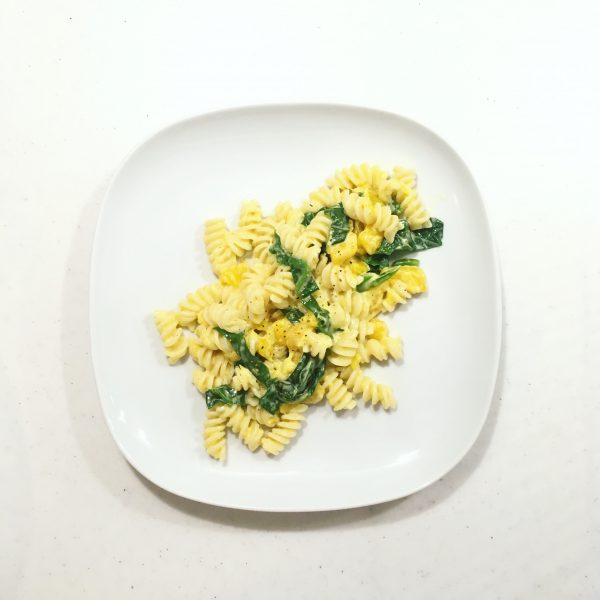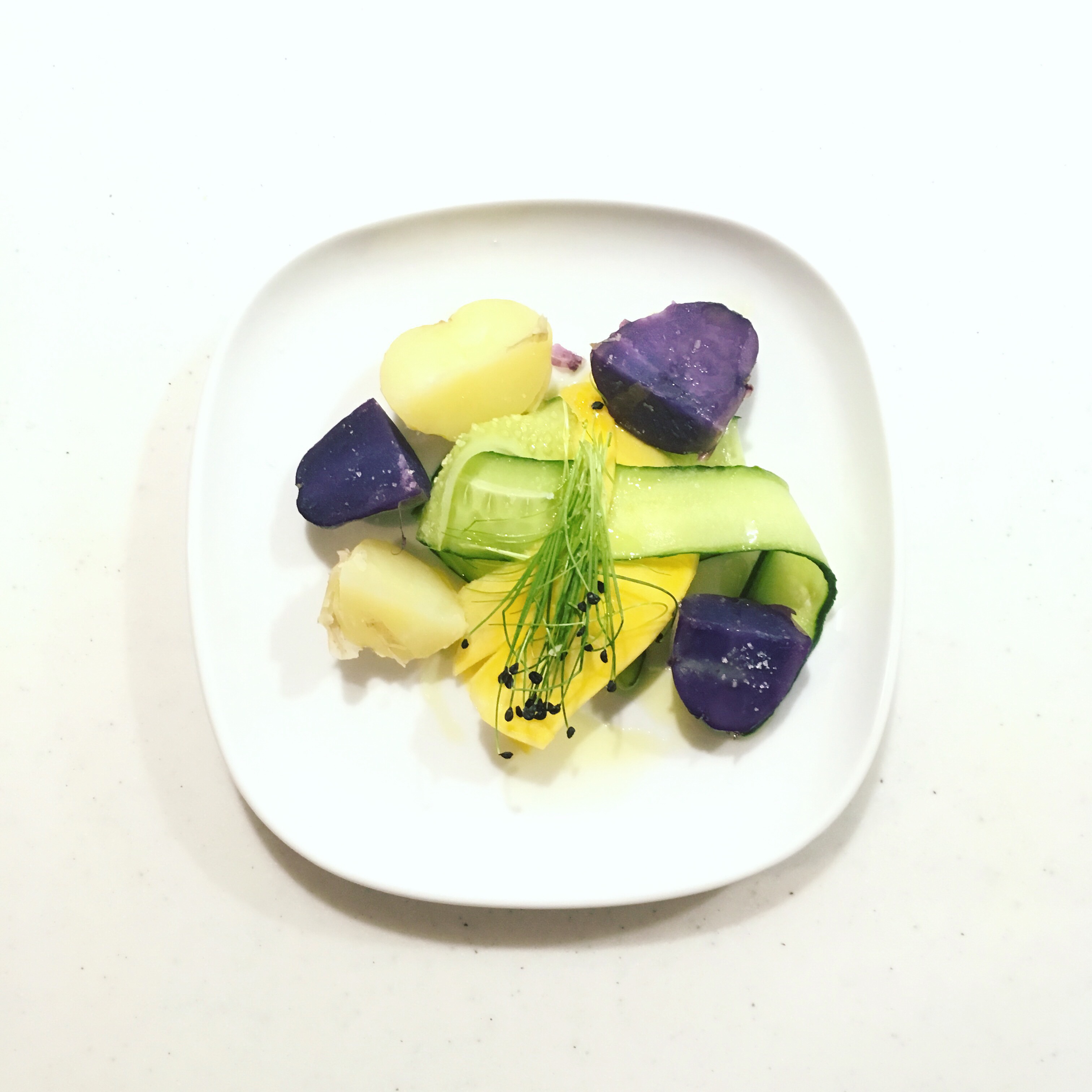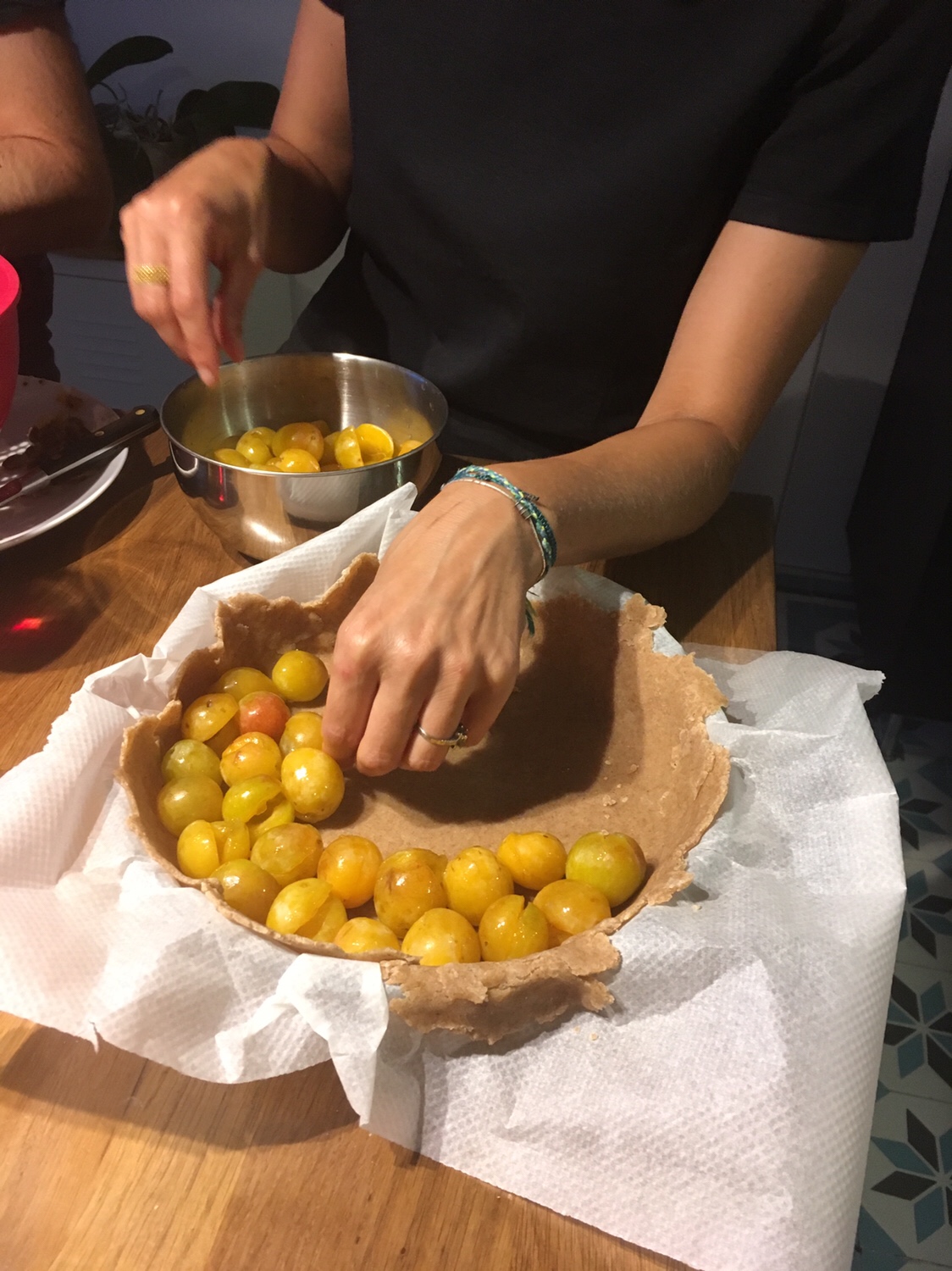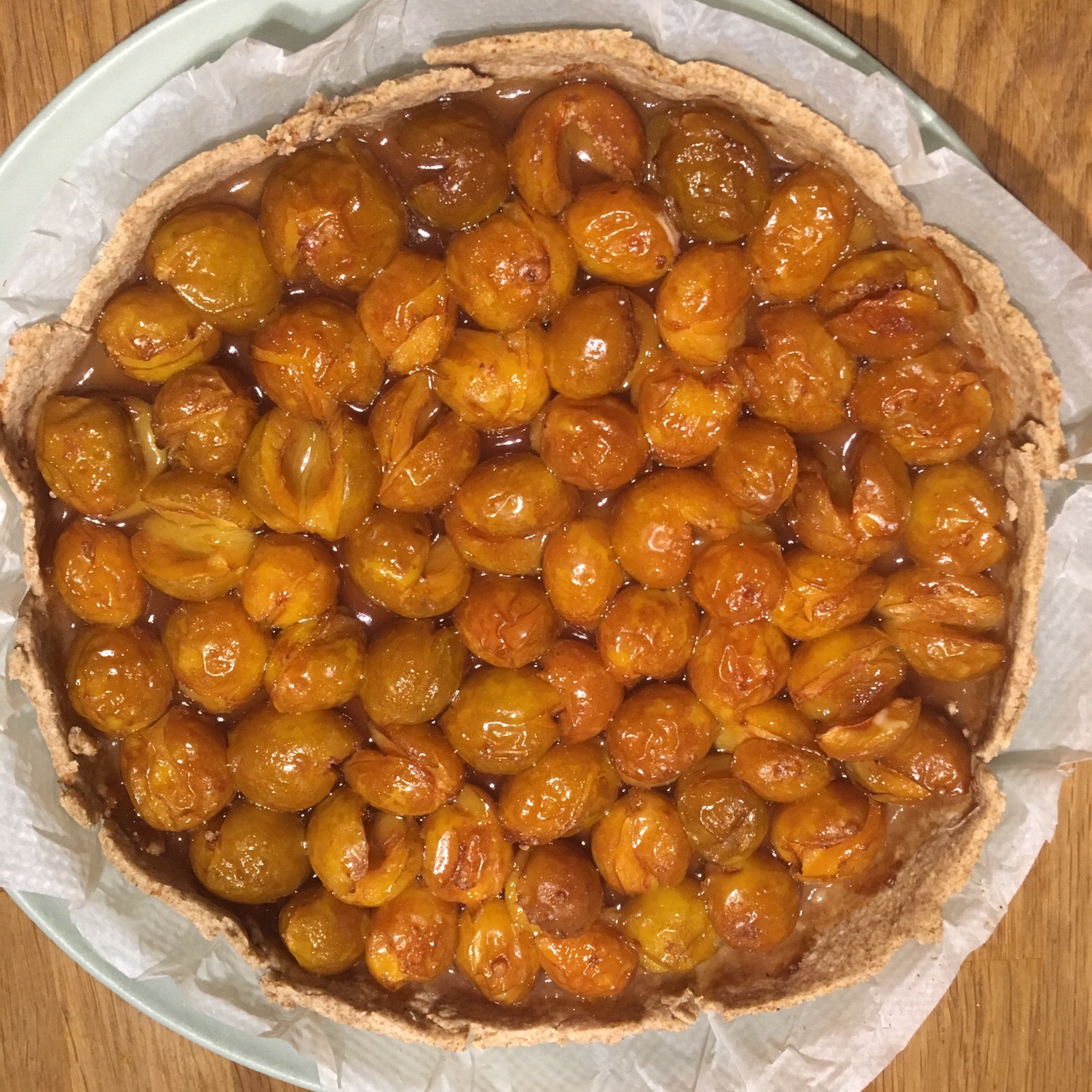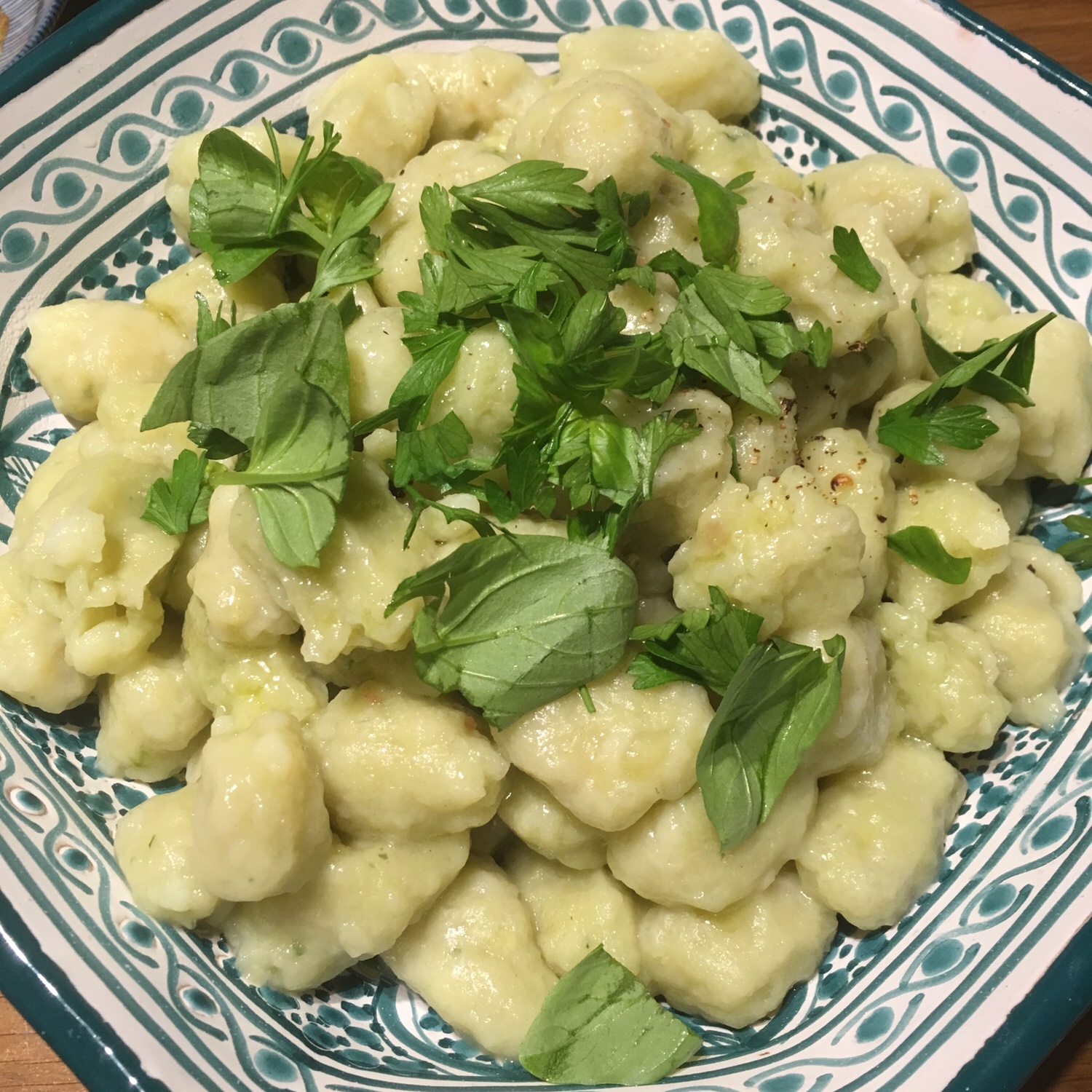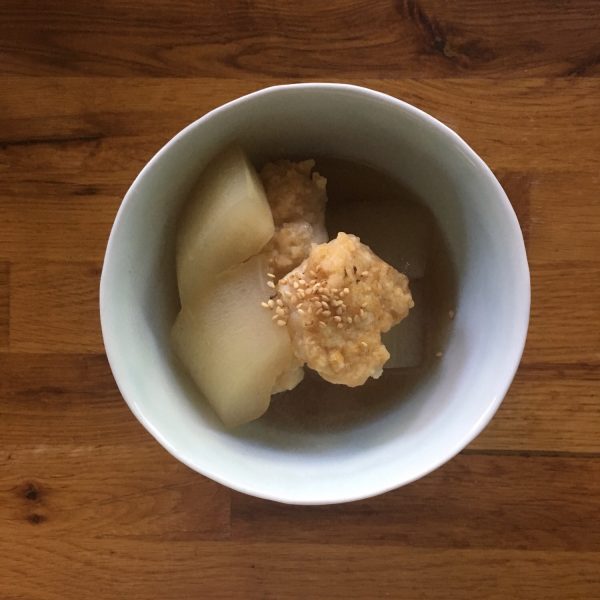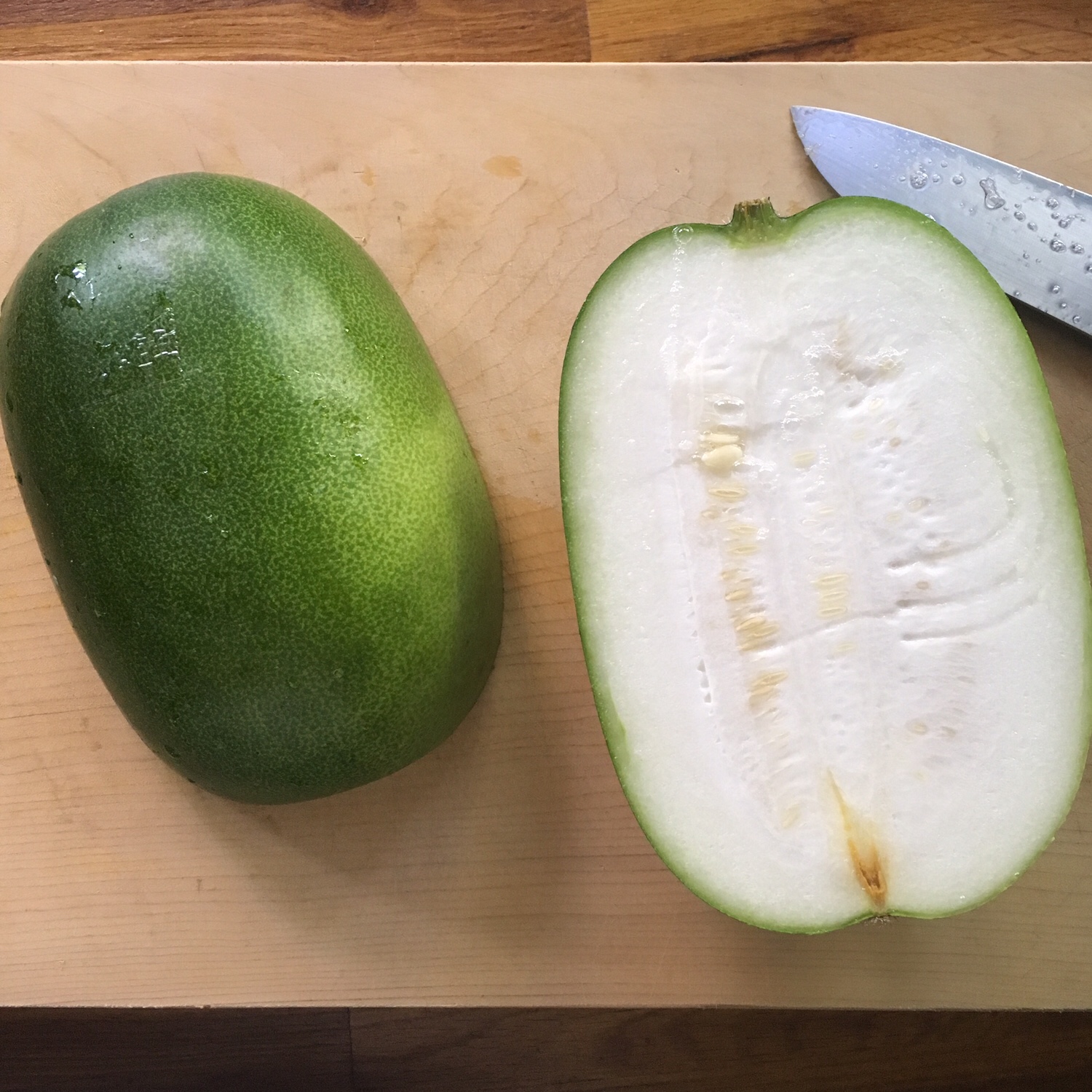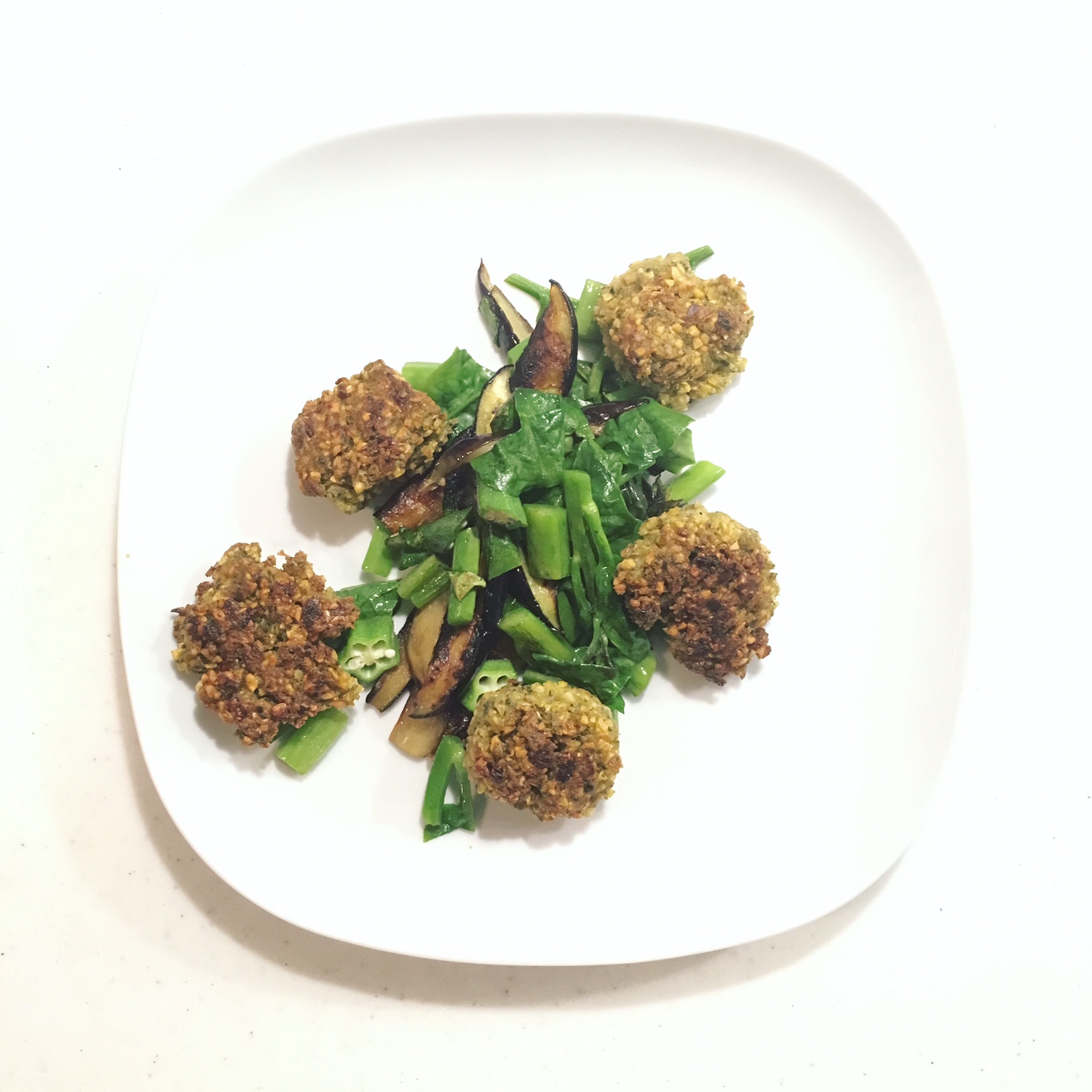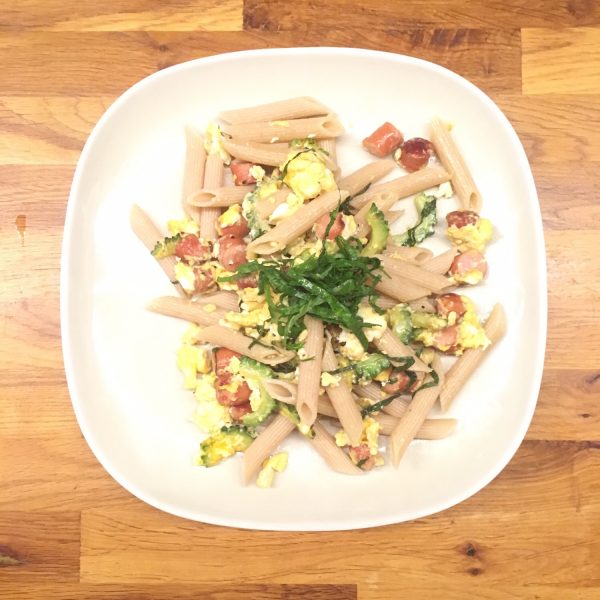In the summer… yes yes it is supposed to be the summer, even if you haven’t felt the summer heat nor got this beautiful summer tan… I love to bake simple fruits tart: apricots, peaches, plums, berries… so when I bought these blueberries and this blackberries at the farmers market, I knew what I would use them for!
The difference from the past years? The pie crust. As I was using up all my butter to an other trial of croissants (pathetic result… you can read about it here). I decided to save the butter for the croissants and simply replaced it by almond butter our friend Y. bring us from Portland. I am not used to almond butter so I wasn’t sure how to use it, but in replacement of butter in pastries dough it seems perfect. Of course it changes the texture and taste but I find it very well suited for fruits tarts. However because it is drier then normal butter I found it was necessary to add a bit of water to the dough to obtain a suitable texture. As for the rest, I just put it in a pie dish, top with the fruits and a but of sugar and bake.
In the oven you can see some chocolate chips sablés, and mini white chocolate and blueberries tarts made in financier cups.

Have a good day… I can’t wait for the sun to come but I wonder if that will ever happen… it’s been 20days of non stop rain and grey skies…
